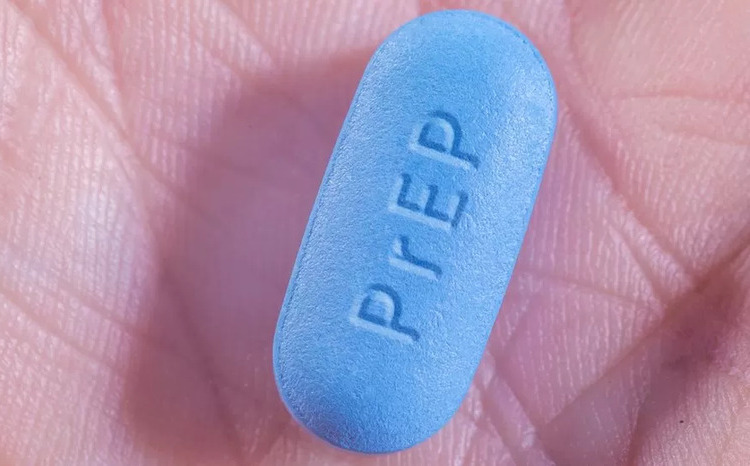How digital services can define and address inequities in sexual health
- 11 October 2022

When looking at how technology can improve parts of the healthcare system, one sector which doesn’t often come straight to mind is sexual health. In a piece for Digital Health, Dr Vanessa Apea medical director at Preventx, looks into how digital services can define and address inequities in sexual health.
In recent years, societal inequities have come into sharp focus with achieving health equity currently being a key priority for the NHS. Since its inception, the central tenet of the NHS has been to provide equal access to healthcare for all, solely on the basis of need. Whilst meeting the needs of many, the inherent infrastructure of NHS delivery results in a number of communities experiencing barriers to accessing care. The responsibility falls on healthcare providers, commissioners and wider health economy to relentlessly better define, address and mitigate these inequities.
Digital health technology – the convergence of digital technologies with health, health care, and society – has emerged as a key tool in NHS care delivery with significant capability to advance equity. Within my specialist field of sexual health, digital health is increasingly becoming an important part of health solutions. Sexual Health services have been making great strides in tackling inequalities in access, treatment and care through innovative digital solutions. These solutions span online booking, results notification, partner notification, online postal self-sampling services and more. Despite the heightened uptake of technology, challenges do persist in maximising its positive potential.
Equal access and barriers
Inequitable access to sexual health is a multifaceted problem, with many interrelating determinants that can be difficult to unravel and define. Sexually transmitted infections (STIs) disproportionately affect often marginalised populations, such as racially minoritised groups, men who have sex with men, migrants and those with a lower socioeconomic status, with differential access compounding these inequalities.
A shared vulnerability across many groups, and one of the fundamental barriers to access, is stigma. Sex, sexuality and sexual health can still all be viewed as taboo topics by some individual and communities, leading to people feeling reluctant or embarrassed to seek help. Many people find it hard to walk into a sexual health clinic because of the stigma related to sexual expression and STIs. Some people who identify as transgender/non-binary can be afraid to leave their home due to discrimination and fear of violence. Lack of representation and relevant sexual health information for all is another barrier. If people do not feel represented in the imagery and content produced by services, they may feel unwelcome, and this discourages access.
A commonly cited barrier to access includes an inability to find time to access services, for example those with no access to childcare, or a job where they can’t get time off. Unfortunately this disproportionately affects those with a lower socioeconomic status, who are likely to have less time to address health concerns.
Hybrid model
Sexual health services work best as a partnership between digital and in-person services (physical sites such as sexual health clinics, primary care, pharmacies, third sector organisations), addressing some of these barriers and allowing people to access support in the way that best meets their needs. Digital services can provide convenience for people who face geographical barriers to access or struggle to find time for in-person appointments.
Digital can be perceived as a ‘safe’ way to engage with healthcare services for people who are nervous about going to a clinic. The comfort of using digital services can act as a stepping-stone to better engagement with in-person services. An additional benefit of digital, is that it allows services to send users additional tailored public health messaging – including about symptoms that would require assessment at an in-person clinic – helping increase early detection and reduce onward transmission.
The wider scope for digital testing can broaden our collection of data. This information can be used to inform and tailor services. For example, at Preventx our recent research looked at the relationship between positivity rates for the sexually transmitted infection Trichomonas vaginalis (TV) and levels of deprivation. They found TV positivity rates are disproportionately high amongst some racially minoritised communities, which allows services to tailor screening strategies accordingly.
Being aware of the challenges
While there are so many exciting possibilities surrounding digital services, we must also be aware of the challenges.
At a patient level, not everyone has access to devices, Wi-Fi and is comfortable using technology. However it’s important to note that the number of people accessing health services digitally is higher than you might think – according to a 2022 policy paper from the Department of Health and Social Care, over 28million people have the NHS app and over 40million have an NHS login. The increasing appetite for digital service is also apparent within sexual health services and it’s clear that mitigating digital inequity must be an intentional focus of all digital providers and their partners.
Although increasing digital access is a positive trend, there can be issues with digital competence and literacy amongst users and healthcare staff. The Covid-19 pandemic has definitely accelerated societal comfort with digital tools but digital literacy should never simply be assumed. Many of the systems currently used within health services, such as care record systems, are not used optimally. Users can assume that digital platforms are flawed or clunky to use, but problems usually arise from people not being taught how to use the platform properly – which could be fixed with better training or improved technology usability.
The tech designers and service providers with knowledge of, and experience working with, groups facing inequality of access, do not always have the funding or resource to develop new and innovative digital solutions. We need to ensure that resources are being allocated wisely, to people with the expertise and ambition to make a difference.
Digital culture and the contextual digital age we are in can itself also influence barriers and facilitators to access, including the effects of stigma, minimising or maximising their positive and negative effects.
Identify and define
In order to make progress in addressing inequalities of access, the first step is to identify and define the problems. We can then work with service users to centre their needs and co-develop services to mitigate inequalities in access. Digital services can make this process easier. We know that health is not always connected enough; it can be difficult to navigate services and people who wish to give feedback can find it difficult to be heard. There is potential for all of this to be optimised in digital spaces.
New digital strategies must be aligned with appropriate digital governance. As digital technology continues to expand and new players in the field emerge, it is crucial that in parallel, robust tools to measure and evaluate the clinical, economic and epidemiological impacts are developed and relevant organisations are held accountable. It is imperative that we do not replace one inequality for another. Current surveillance is far from optimal and this must change.
Health inequalities are a complex issue and there are many reasons why particular groups are at risk of inequality of access. While there are still challenges to overcome to fully address this, innovative digital services are playing an important role in increasing access – whether that is through making people more comfortable with sexual health testing, increasing public health education or acting as a tool to gather patient feedback at scale. Digital services should be developed and delivered in tandem with in-person services to achieve truly patient centric care.
We need to accelerate progress in digital tools, by channelling investment through a persistent lens of equity and ensuring the communities we are trying to serve are at the heart of design.




